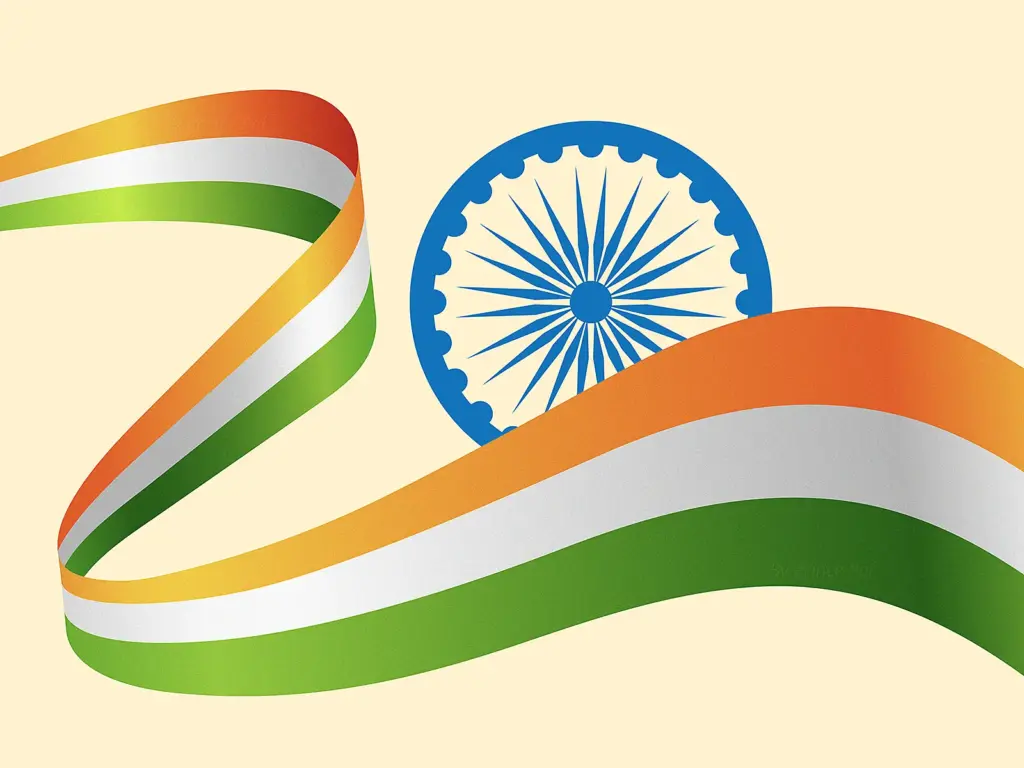The Indian National Flag – Tiranga: Pride of India

The Indian National Flag, popularly known as the Tiranga, is one of the most powerful symbols of India’s independence, unity, and diversity. It represents the sacrifices of freedom fighters, the values of democracy, and the spirit of patriotism among Indians. Adopted on 22nd July 1947, the Tiranga is not just a piece of cloth but a reminder of India’s long struggle for freedom and its commitment to peace, progress, and harmony.
With its three horizontal stripes of saffron, white, and green, and the Ashoka Chakra in navy blue at the center, the Tiranga is respected and cherished by every Indian. It is hoisted with pride on Republic Day (26th January), Independence Day (15th August), and on countless occasions when India achieves milestones globally.
In this article, we will explore everything about the Indian National Flag – Tiranga, including its history, design, significance, rules, cultural impact, and frequently asked questions.
History of the Indian National Flag (Tiranga)
The Early Flags of India
Before the adoption of the Tiranga, several versions of flags were used during India’s struggle for independence:
-
1906 Calcutta Flag: The first unofficial flag was hoisted in Kolkata with green, yellow, and red stripes.
-
1907 Paris Flag: Madame Bhikaji Cama and others unfurled the Indian flag in Paris with green, saffron, and red colors.
-
1917 Home Rule Movement Flag: Bal Gangadhar Tilak and Annie Besant introduced a flag with five red and four green stripes.
-
1921 Flag by Pingali Venkayya: Mahatma Gandhi suggested a flag designed by Pingali Venkayya, which later became the foundation of the Tiranga.
Adoption of the Tiranga in 1947
On 22nd July 1947, the Constituent Assembly of India adopted the tricolor flag as the official flag of free India. The design by Pingali Venkayya was slightly modified – the spinning wheel (charkha) in the center was replaced by the Ashoka Chakra (Wheel of Dharma).
The Tiranga was first officially hoisted on 15th August 1947 when India gained independence.
Design and Structure of the Tiranga
Colors of the Indian Flag
-
Saffron (Top Stripe) – Represents courage, sacrifice, and the spirit of renunciation.
-
White (Middle Stripe) – Symbolizes peace, truth, and honesty.
-
Green (Bottom Stripe) – Stands for faith, fertility, prosperity, and the relationship with nature.
The Ashoka Chakra
-
The navy blue Ashoka Chakra in the middle of the white stripe has 24 spokes.
-
It represents righteousness, justice, and the cycle of life.
-
Inspired from the Lion Capital of Ashoka at Sarnath, the wheel symbolizes continuous progress.
Dimensions of the Tiranga
The official ratio of the flag’s width to its length is 2:3. Each stripe is equal in size, and the Ashoka Chakra is drawn precisely to standard specifications.
Symbolism of the Indian National Flag
The Tiranga is not just a flag; it is a philosophy.
-
Saffron = Courage and selflessness.
-
White = Truth and peace.
-
Green = Prosperity and faith.
-
Ashoka Chakra = Law of Dharma, reminding India to stay on the path of righteousness.
Together, the Tiranga represents unity in diversity and the values of a democratic and secular nation.
Rules and Etiquette of the Indian Flag (Flag Code of India)
The use of the Indian flag is governed by the Flag Code of India to ensure respect and dignity.
Important Guidelines
-
The flag must always be hoisted in a position of honor.
-
It should never touch the ground, floor, or water.
-
The Tiranga should be made of hand-spun khadi cloth, though recent amendments allow polyester and machine-made flags.
-
It must not be used as clothing, drapery, or decoration.
-
Hoisting is permitted by all citizens on all days, but it must be done respectfully.
Half-Mast Protocol
The Tiranga may be flown at half-mast only to mark national mourning, as instructed by the government.
National Festivals and the Tiranga
Independence Day (15th August)
On this day, the Prime Minister of India hoists the flag at the Red Fort in New Delhi. Citizens across the country hoist the flag in schools, offices, and homes.
Republic Day (26th January)
The President of India unfurls the Tiranga at Rajpath during the grand Republic Day parade.
Gandhi Jayanti & Other National Days
On occasions like Gandhi Jayanti (2nd October) and special commemorations, the flag is hoisted to honor the Father of the Nation and other freedom fighters.
Tiranga in Modern India
Use in Sports
During international sports events like the Olympics, Cricket World Cup, and Hockey Championships, Indian players proudly carry the Tiranga.
Digital Tiranga
With campaigns like #HarGharTiranga and Digital Tiranga Profile Pictures, Indians worldwide show their patriotism online.
Tiranga in Space
The Indian flag has also traveled beyond Earth – carried by Indian space missions as a symbol of national pride.
Interesting Facts About the Tiranga
-
The largest Indian flag was hoisted in Belagavi, Karnataka, measuring 120×80 feet.
-
The Tiranga is always hoisted higher than any other flag in India.
-
The Ashoka Chakra was chosen instead of Gandhi’s Charkha to represent laws of Dharma applicable to all citizens.
-
The first flag hoisting at the Red Fort was done by Pandit Jawaharlal Nehru on 15th August 1947.
FAQs on the Indian National Flag (Tiranga)
Q1. Who designed the Indian flag?
A: The Tiranga was designed by Pingali Venkayya.
Q2. When was the Indian National Flag adopted?
A: On 22nd July 1947 by the Constituent Assembly.
Q3. What does the Ashoka Chakra represent?
A: The 24-spoke wheel symbolizes truth, justice, progress, and righteousness.
Q4. Can every citizen hoist the Tiranga?
A: Yes, as per the Flag Code of India (amendments in 2002 and 2021).
Q5. Why is it called Tiranga?
A: Because it has three colors – saffron, white, and green.
Conclusion
The Indian National Flag – Tiranga is more than a national symbol; it is the soul of India. It reflects the courage of freedom fighters, the values of truth and peace, and the dream of prosperity for every citizen. Whether hoisted at the Red Fort, in villages, schools, stadiums, or even in space, the Tiranga continues to inspire Indians across generations.
As citizens, it is our duty to respect the flag and uphold the values it stands for – unity, diversity, democracy, and progress.
The Tiranga will forever remain a source of inspiration, reminding us of the sacrifices made for freedom and the responsibility we hold for the nation’s future.
